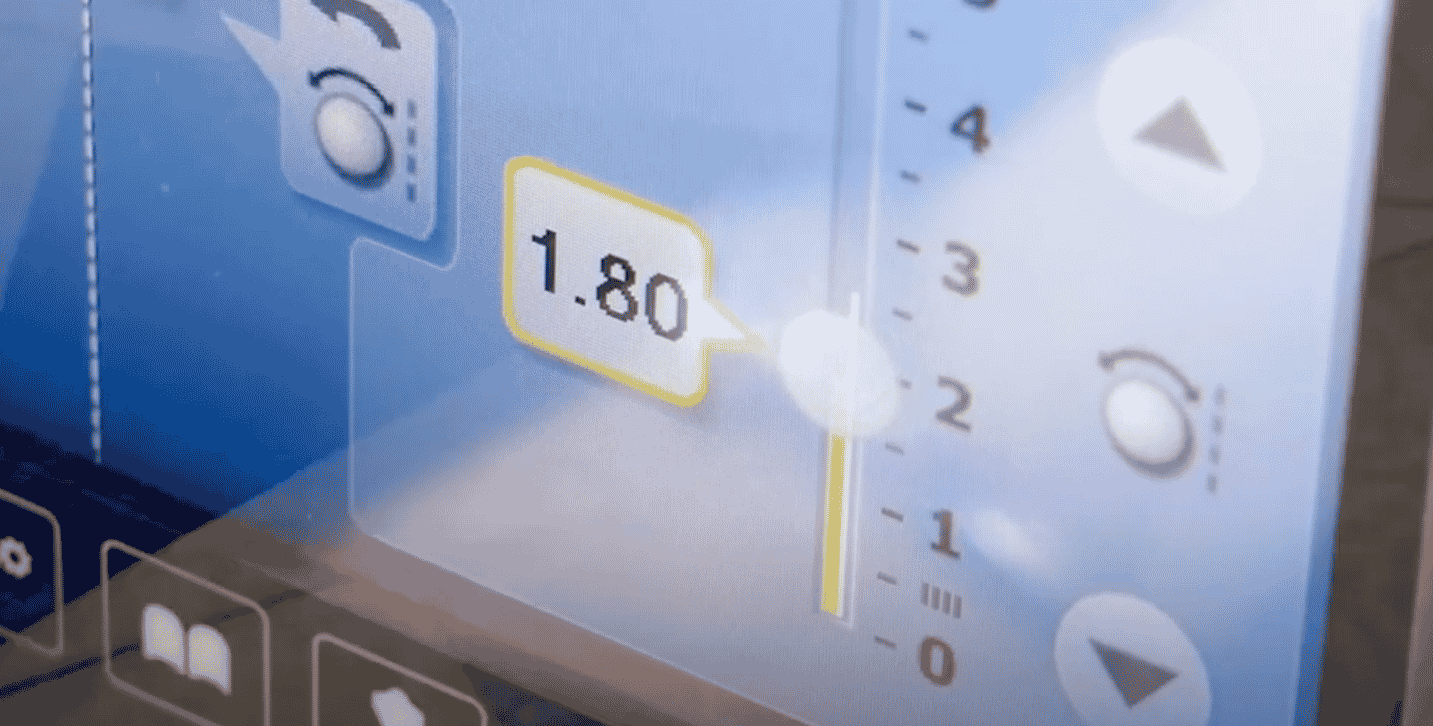Earthwork cost is one of the major cost items (approximately 25% of the construction costs) in road construction projects. The amount of earthwork volumes therefore earthwork cost, mostly depends on the geometry of the road vertical alignment. We can conclude that an optimized vertical alignment has a profound impact on earthwork costs. Proposed linear optimization model is supposed to be implemented with application of simplex method as the component of complex branch and bound approach.
The developed model has been implemented on the basis of practical example. After the optimization of vertical alignment, earthwork volumes have been calculated in the road design software with average end area volume calculation method. We also have provided numerical results which include earthwork volumes and cost improvements over preliminary design. This method involves drawing horizontal and vertical lines over your site plan to divide it into grid cells of equal size. You then include the existing elevation and proposed elevation for each corner of the grid cells, and work out the difference between the two, as this will be cut or fill depth for that spot. When you've done this for every corner you add them up, average them, and perform further calculations that will end up giving you a total number of cuts and fills.
The difference between these two numbers will show you if earth will need to be removed or brought onto site to complete the job. The grid method of calculation involves drawing a grid onto the plan for the earthwork project. For each node of the grid, determine the existing and proposed ground level and calculate the cut or fill required. Once the cut or fill depth is calculated, multiply the value by the area of the grid cell. Do this for each square of the grid, then add the volumes together to determine the total cut and fill volumes for the project. The grid method involves drawing a uniform grid onto a plan of the earthworks project, and taking off the existing and proposed ground levels at each node of the grid.
With these values the average depth of cut or fill required on each cell of the grid is calculated, and the volume for each cell is obtained by multiplying the depth by the cell area. By adding the volumes for each cell together the total cut and fill volumes for the project can be estimated. Reliable and accurate earthwork calculation is one of the most important components in road engineering that can influence the construction cost and road alignment choice. In this research, the method of ground penetrating radar was applied to detect the subsoil rock share in forest road construction.
The GPR data acquisition was carried out using a 250 MHz GPR antenna along 22 segments on the centerline and 12 meters across to the road project. The GPR data processing was done by performing different filters, such as background removal, migration, band pass filter, and horizontal and vertical smoothing on the GPR data. To investigate the capability of the GPR method used in this road construction project, we compared the GPR radargram and road profile after construction. The results indicated that the maximum penetration depth of the GPR waves produced by a 250 MHz GPR transmitter antenna, which were between 2 and 5 meters in fine area and rocky grounds, respectively.
Moreover, the capability of GPR to map large dimension roots and water content is presented in this work. So how do estimators calculate the volume between two surfaces? This can be a very complicated process since the amount that the elevation of the soil surface changes can vary considerably and irregularly across the site. The first surface is typically the existing site topography, while the second shows the post-construction site grades.
Post construction grades can result from excavation of existing soil, by the placement of additional soil, or by some combination of the two. The volumes required to place soil are typically designated as positive volume while those volumes resulting from excavation are treated as negative volumes. The resultant numbers can be added together to get a cut-to-fill balance for the site.
A well-designed site will result in a balanced cut to fill with the net volume of the two equaling zero. Depending on the nature of the site and its proposed earthwork, there are several options available for accurately estimating the resulting earthwork volumes. The largest share of emissions in road transport occurs in the use phase; hence, considering vehicles' behavior already in the early stages of the planning process is crucial. This study compares earthwork costs, fuel costs, and tank-to-wheel emissions of alternative road vertical alignments using a spline linear programming optimization method. The traditional minimal earthwork cost model is tailored and augmented with a fuel item to account for vehicle fuel costs.
Three options are considered, including an earthwork-based optimal road alignment, a balanced earthwork-and-fuel cost (EW-FC) optimal alignment, and a minimal fuel cost alignment. Calculations are done for a reference test heavy-duty vehicle assumed to operate at uniform speed. The results exhibited that, although leading to some increase in earthwork costs, a design for balanced EW-FC cost yields substantial fuel budget and related emissions savings. The cross-section method of calculation is a common method used with the 2-dimensional method of mapping. With this method, cross-sections of the existing and proposed land levels are measured at regular intervals across the site. The cut and fill area is determined for each cross-section, then adjacent cross-sections are compared and the averages of their cut and fill areas are multiplied by the distance between them.
This is done for each adjacent pair of sections, then the total volumes are added together to create the complete cut and fill volumes for the project. Determinations of alignments and station locations are major tasks in railway design, which jointly and fundamentally influence the construction and operation of the whole project. Therefore, this study focuses on modeling and optimization of passenger railway alignments and station locations simultaneously. A novel optimization model is formulated for maximizing net present value considering comprehensive costs and revenue from riders over the railway's design life. Specifically, the comprehensive cost includes construction and operation costs of alignments and stations. The railway ridership is quantified by combining travel time and trip coverage using a logit function.
Then, the railway revenue is estimated and combined with costs through an economic growth model to obtain the NPV. To solve this model, two customized and mutually exclusive methods, that is, the station-alignment-integration and alignment-station-integration methods, are developed based on a particle swarm algorithm. The SAI primarily searches for possible stations in the landscape and then generates alignments to connect adjacent stations.
The ASI directly yields the main alignment, on which potential stations are located by handling specific constraints. The model and methods are applied to an actual high-speed railway. Results show that both SAI- and ASI-generated railways have higher NPV values compared to the corresponding railway designed by experienced designers. Sensitivity analysis reveals that SAI is more flexible than ASI in solving actual cases.
With some changes in input parameters based on locally applicable design standards, the proposed methods are generally applicable to other cases or countries. The second outdated but still efficient way of calculating cut and fill ratios is the cross-section method. This requires a very accurate graph to be mapped out where the existing elevation is located across both a vertical and horizontal axis. From here, the proposed elevations for the new plans are to be overlaid and then a grid is created between the two spaces.
This then enables the surveyor to calculate each grid piece and its volume, then calculate the cut and fill ratios based on this work. Before drone technology for GPS mapping existed, there were two very manual ways of calculating cut and fill ratios for your job site. The first of which uses a grid method which calls for your construction plans to be laid out over a flat surface and then divided up equally into to set grid squares.
This then allows you to calculate and determine what cut and fill are required per each individual grid section. Following this, all grid sections can be added together for the overall volume required +/- 20%. The Triangulated Irregular Network and Digital Terrain Model Methods.The Triangulated Irregular Network method utilizes files created by AutoCAD (".tin" files) on topographic surfaces to determine volumes. This, in turn, allows for the creation of highly accurate Digital Terrain Models.
Given the huge number of calculations required, this is a process that can only be done on a computer. The DTMs allow for direct calculation between a surface and a fixed elevation or two such surfaces. DTMs can also be generated for different soil strata in an excavation, allowing for direct calculation of volumes for each soil type.
The slices are aligned perpendicular to a baseline running the full length of the earthwork area. This is usually the site's longest dimension to increase accuracy, but can also be aligned along a property or tract line, utility easement, right of way, roadway centerline, etc. The interval between the parallel slices can vary depending on the size of the site and the designed accuracy of the calculation. The volume of a massive 1,000-acre site development could be calculated with reasonable accuracy with intervals of 100 to 200 feet.
A smaller square building lot of fewer than 10 acres would not achieve reasonable accuracy with such a large interval as it would only utilize six slices. In general, the smaller the site, the smaller the required interval between slices. The cross section method involves plotting cross sections of the existing and proposed levels at regular intervals across the project site. For each of the cross sections, the cut area and the fill area is determined.
The volume between each pair of sections is estimated by multiplying the average cut or fill area of the two sections by the distance between them. Once these volumes have been calculated for each pair of sections the total cut and fill volumes are obtained by adding them all together. Formulas and methods for determining the volumes and areas of regular shapes and surfaces go back at least as far as ancient Greece. Pythagoras and other mathematicians determined those formulas that are still used to calculate the volumes of spheres and pyramids, as well as the areas of curve conic sections. But what was a matter of mystic philosophy to the Greeks is a matter of financial life or death for earthwork contractors.
Since there is an inherent error in any estimating earthwork calculation, the contractor must properly manage the resultant unknowns to ensure the success of the project. The triangular prism method starts by triangulating the existing terrain to create a continuous surface of connected triangles. Once both surfaces are complete, the triangulations are merged to create a third triangulation. Once merged, the cut and fill is calculated by taking the volumes of the generated triangles and adding them together.
Because of the excellent representation of both the existing and desired terrains, this method presents an excellent representation of volumes for cut and fill projects. The cross-section method of calculation is considerably more time-consuming than automatic methods of calculating volume, and the accuracy of the method depends on the distance set between sections. Closer sections result in greater accuracy but take longer to calculate, while further sections are less accurate but take less time to calculate. Once we create the EG and FG surfaces, we can proceed to create a volume TIN surface.
On this surface, we will select the EG as 'base surface' and the FG as 'comparison surface'. After this, we will have a volume surface in Civil 3D containing accurate cut and fill volumes. The software obtains these volumes by comparing the volume contained between the triangles of the EG and those of the FG. We then just need to open the volume dashboard and add our newly created volume surface.
The volume dashboard will give us the amount of cut and fill in the volume surface, as well as the net volume so that we know whether the project will have an excess of material or will have to import material . On top of these, one of the most popular tools amongst contractors is the Civil 3D cut and fill analysis. Estimating the earthworks volume often becomes one of the most challenging parts of any construction project. Traditionally, this estimate was a manual process, using cross-sections from topographical surveys. This method was very time-consuming and often led to substantial errors due to the human factor.
Airborne light detection and ranging surveying technology plays an important role in road design, and it is increasingly implemented in the design stage. This paper reviews the application of airborne LiDAR in road design and factors including items from the perceived usefulness of technology. The context of the future direction of LiDAR technology is highlighted in civil engineering road design, roadway inspection and as-built documentation. Therefore, designers and contractors prefer to place road in the areas that have soft terrain and minimum earthwork, excavation (Ghajar et al. 2012). The rock proportion of the subsoil directly impacts the cost of embankment in forest road, including the excavation depth and height (Contreras et al. 2012). There are many ways to estimate the earthwork volume and material as the most important target to optimize or manage horizontal and vertical alignment.
The Grid Method.The Grid Method is normally used to estimate volumes excavated from borrow pits . Like the Depth Area Method, the Grid Method utilizes thickness measurements over a given area. Each grid point is treated as the center of a square whose sides are equal to that of the grid interval . The surface slope within the grid square itself is accounted for and approximated by assigning surveyed or proposed elevations to each of the square's corner points. The square is treated as a column that goes directly down vertically through the proposed soil excavation where the four corners align with matching corners located on the proposed surface.
Measurements can then be taken to determine the depth of cut or fill at each corner . At Position Partners, we make calculating your cut and fill volumes and ratios easier and more cost-effective with our line of innovative drones and drone technology. This new extensive range of drone technology is aimed at making site surveying easier and more cost-effective. By increasing the survey accuracy and utilising the high quality, durable and innovative drone and software programs, large site areas can be surveyed in half the time.
By utilising remote flight technology, this cuts the number of boots on the ground required which is generally what increases surveying costs. A computational method that can be used to calculate cut and fill volumes more accurately than previous methods is proposed. The method is a simple one, and utilizes the primary concepts of the average-end-area formula, and provides additional constraints that should improve the accuracy of the results. The proposed technique applies certain limitations to each type of calculation that is made depending on the configuration (cut and/or fill) of the end areas of the two sections. These limitations involve the definition and location of a theoretical section having zero cross-sectional area.
Like the cross-section method of calculation, the grid method takes time to implement and is significantly more time-consuming than any automatic systems. Additionally, the accuracy of the grid method depends on the size of the grid cell. Larger cells take less time to calculate but are less accurate, while smaller cells are more accurate but take more time to calculate.
How Do You Calculate Fill Volume When building a road, it is critical to select a vertical alignment which ensures design and safety constraints. Finding such a vertical alignment is not necessarily a feasible problem, and the models describing it generally involve a large number of variables and constraints. This paper is dedicated to rapidly proving the feasibility or the infeasibility of a Mixed Integer Linear Program modeling the vertical alignment problem. To do so, we take advantage of the particular structure of the MILP, and we prove that only a few of the MILP's constraints determine the feasibility of the problem. In addition, we propose a method to build a feasible solution to the MILP that does not involve integer variables.
This enables time saving to proving the feasibility of the vertical alignment problem and to find a feasible vertical alignment, as emphasized by numerical results. It is on average 75 times faster to prove the feasibility and 10 times faster to build a feasible solution. After a successful flight, the stand-alone Agisoft Metashape software begins the process of photogrammetric processing of all digital images taken and generates 3D spatial data. This allows surveyors to gain an accurate description of the area and to begin to plan work. TBC helps you create projected surfaces along a vertical wall and perform earthwork analysis to detect and monitor the quantitative movement of the wall. Surveyors and construction engineers may also create cut/fill maps on 2.5D topographic surfaces to determine how much material needs to be cut or filled on a job site.




























No comments:
Post a Comment
Note: Only a member of this blog may post a comment.